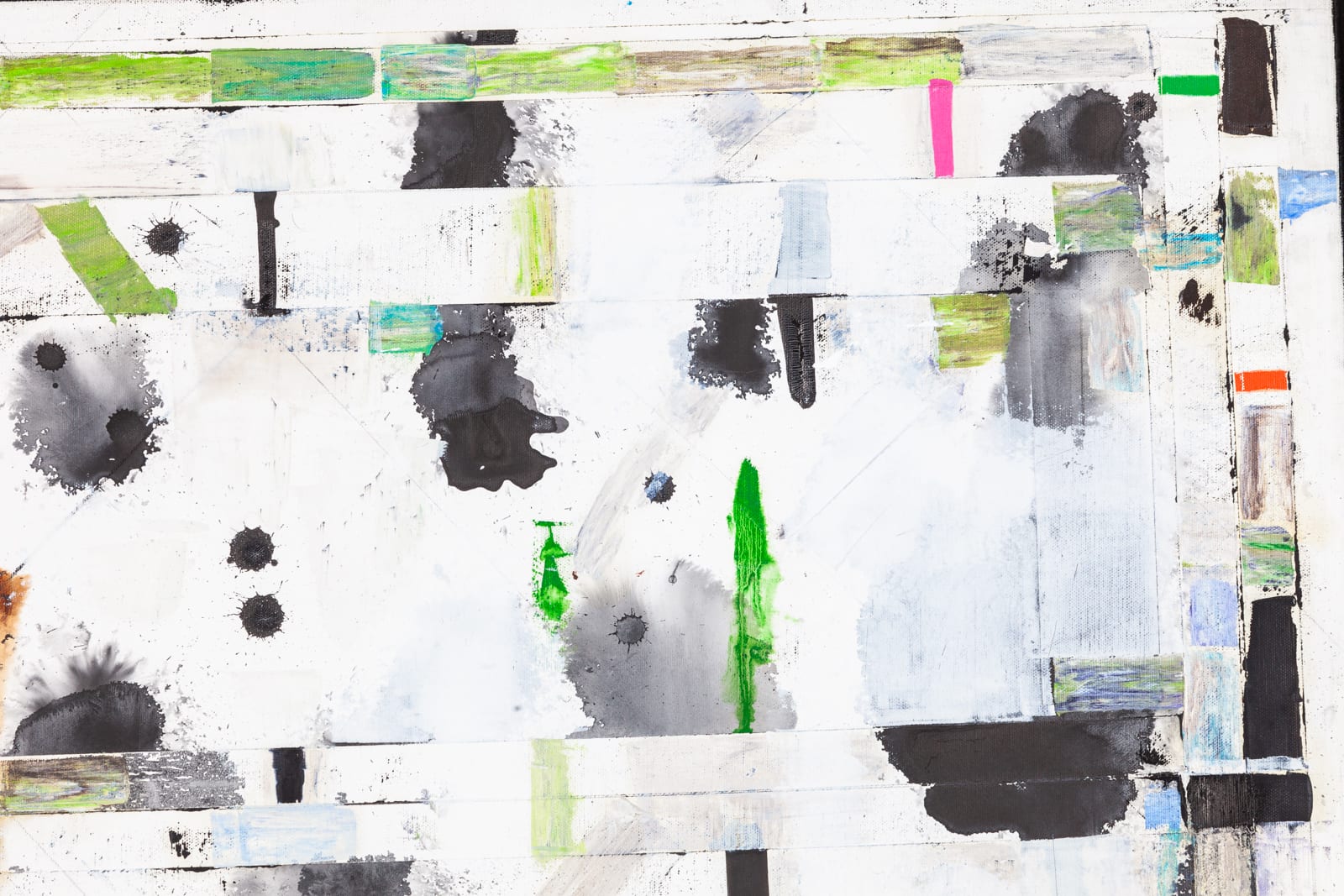Young-Il Ahn Korean-American, 1934-2020
Memorial to September 11th F, 2001
Oil on canvas
60 x 52 x 2 in
152.4 x 132.1 x 5.1 cm
In artist-made wood frame
152.4 x 132.1 x 5.1 cm
In artist-made wood frame
7813
Further images
This painting is one of a series of works Young-Il Ahn made as a memorial to the terrorist attack on the United States on September 11, 2001. Ahn married his...
This painting is one of a series of works Young-Il Ahn made as a memorial to the terrorist attack on the United States on September 11, 2001. Ahn married his wife Soraya on September 9, 2001, and two days later, the attack would rock them as it did many Americans. Soraya’s three grown daughters had flown to California from New York for the wedding; this close brush with the attack charged it with all the greater weight for Ahn and his new family. These mysterious, grim paintings emanate a sense of pain and sorrow, rather unlike the jovial rhythms of his other canvases.
The September 11th paintings are an extension of Young-Il Ahn’s Self-Reflection series. One of his most personal bodies of work, it shares many of the organizational hallmarks of his Water paintings, including compositional reliance on a grid, impasto marks, and similarly worked surfaces. But the autobiographical content of these paintings lends them a unique character within his oeuvre.
Woven into the abstract grids of the Self-Reflection paintings are a series of linguistic symbols, including references to the Korean language's logically ordered, alphabetical writing called Hangul and its logographic symbols borrowed from Chinese called Hanja.
The work hangs on a wire that is attached to its back.
The September 11th paintings are an extension of Young-Il Ahn’s Self-Reflection series. One of his most personal bodies of work, it shares many of the organizational hallmarks of his Water paintings, including compositional reliance on a grid, impasto marks, and similarly worked surfaces. But the autobiographical content of these paintings lends them a unique character within his oeuvre.
Woven into the abstract grids of the Self-Reflection paintings are a series of linguistic symbols, including references to the Korean language's logically ordered, alphabetical writing called Hangul and its logographic symbols borrowed from Chinese called Hanja.
The work hangs on a wire that is attached to its back.
Provenance
Artist Studio, LAKavi Gupta, Chicago











